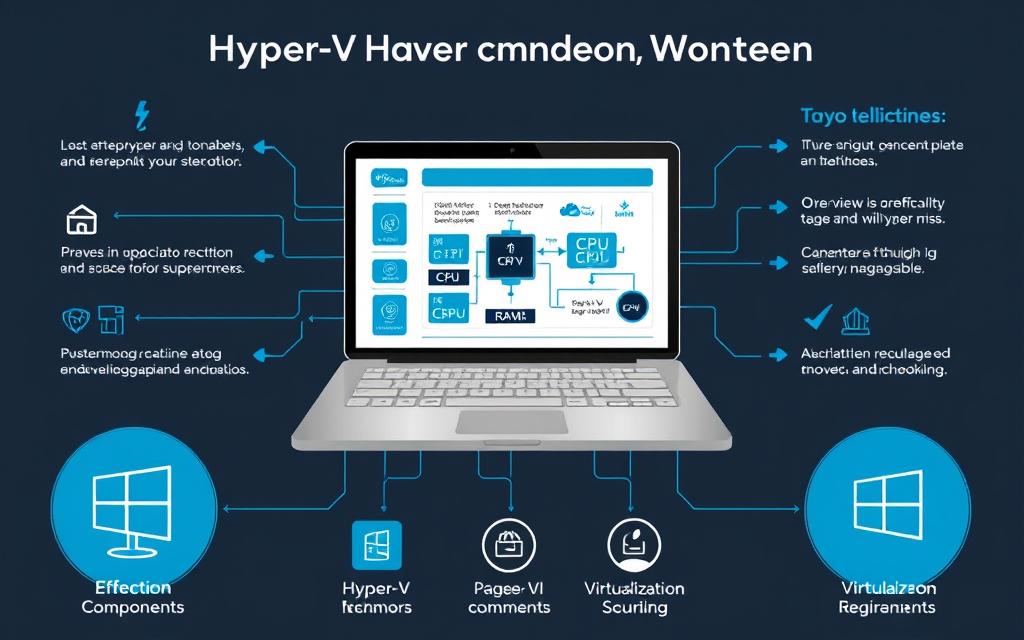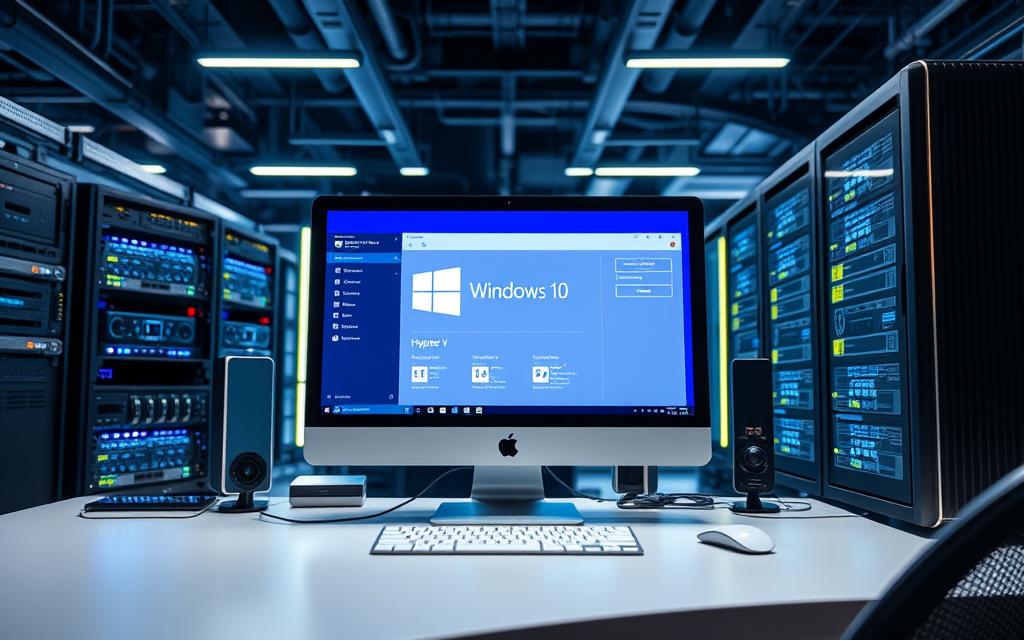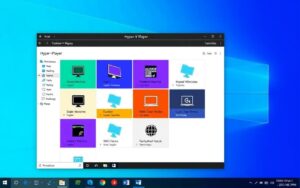Table of Contents
Hyper-V is a standout solution for virtualisation in the modern digital world. It lets users make and manage virtual machines (VMs) on their Windows 10 devices. This gives them the power to use resources wisely and be more flexible. Running Hyper-V on a Windows 10 server opens up many helpful tools. These tools are great for managing and setting up systems. It’s key to get the basics of Hyper-V, especially how it works well with Windows 10, Windows Server 2022, and Azure Local.
Getting Hyper-V ready is not just about knowing what your system can handle. You also need to think about how it might not work well with other virtualisation apps like VMWare Workstation and VirtualBox. For many, using Hyper-V for a few VMs on Windows 10 works out well. This is true if they follow all the steps for installing it right and staying on the right side of licensing rules.
This piece will cover all you need to know about setting up Hyper-V. We’ll talk about what you need for installation and how to configure it. This info will help you make the most of virtualisation on Windows 10.
Introduction to Hyper-V on Windows 10
Hyper-V is a potent tool that lets you create several virtual machines on one host. This helps use resources well, valuable in many computing settings. Knowing about Hyper-V shows its role in improving both personal and work tasks.
What is Hyper-V?
So, what is Hyper-V? It’s a virtualisation technology from Microsoft, built on a hypervisor. Hyper-V allows each virtual machine to work separately using the same hardware. This is key for running different systems and apps together on one computer.
Benefits of Using Hyper-V for Virtualisation
Hyper-V offers more than just virtualisation. It helps set up private clouds and combines servers into a few powerful ones. This boosts continuity by reducing downtime effects. With Virtual Desktop Infrastructure (VDI), it also betters data security and makes desktop management easier. Plus, Hyper-V supports backup, tuning, and remote access for better management.
Supported Windows Versions
Hyper-V works with several Windows versions, including Windows 10 Pro and Enterprise, and Windows 11 Pro and Enterprise. It’s also compatible with Windows Server versions like 2025, 2022, 2019, and 2016. Most computers can run Hyper-V if they have a processor with SLAT and at least 4GB of RAM.
| Operating System | Version | Type |
|---|---|---|
| Windows 10 | Pro / Enterprise | Client |
| Windows 11 | Pro / Enterprise | Client |
| Windows Server | 2016 | Server |
| Windows Server | 2019 | Server |
| Windows Server | 2022 | Server |
| Windows Server | 2025 | Server |
Setting Up Hyper-V Windows 10 Server
Setting up Hyper-V on Windows 10 is a step-by-step process. First, make sure you know the system requirements. Then, enable Hyper-V on your computer. Lastly, create virtual machines using Hyper-V. This guide is made for both beginners and tech gurus to use virtualisation effectively.
System Requirements for Hyper-V
Before starting, check if your system fits the Hyper-V system requirements. You will need:
- A 64-bit processor with Second Level Address Translation (SLAT)
- At least 4 GB of RAM, but 8 GB is better for top performance
- Enabled BIOS-level hardware virtualisation support
It’s crucial your computer meets these needs for Hyper-V to run smoothly. If not, you might face issues with Hyper-V and struggle with managing virtual setups.
Enabling Hyper-V on Windows 10
Once you’ve checked your hardware, it’s time to enable Hyper-V. You can do this through the Windows interface or using PowerShell commands. Here is a useful command:
Enable-WindowsOptionalFeature -Online -FeatureName Microsoft-Hyper-V -All
Remember to reboot your computer after. This will turn on the tools needed to manage Hyper-V.
Creating and Configuring Virtual Machines
With Hyper-V enabled, you’re ready to create virtual machines in Hyper-V. This part is straightforward. You’ll decide on memory and CPU use. You can also make three kinds of virtual switches: External, Internal, and Private. This choice depends on how you want your network to work. It’s best to use static memory and fixed-size disks for good performance.
For help, including solving common setup problems in non-domain settings, follow this detailed guide. Following these instructions will help you tweak your virtual machines for smoother running.

Conclusion
Running Hyper-V on Windows 10 offers users powerful virtualisation tools. This allows them to manage many virtual machines on their desktop or workstation. It enhances resource management and operational efficiency.
This technology is perfect for IT departments and developers for testing applications safely. The strategic benefit of Hyper-V for organisations is clear. It saves costs by reducing the need for extra physical servers. Users also notice lower energy bills with Hyper-V.
Hyper-V is included in Windows 10/11 Pro, Enterprise, and Education editions, making it widely available. It stands alongside VMware, offering top-notch virtual infrastructure management. For more information, check out this guide on Hyper-V. Adopting Hyper-V can surely make your workspace more adaptable and effective.
FAQ
What is Hyper-V?
Hyper-V is a technology Microsoft made. It lets users create and manage many virtual machines on one physical host. This makes using computer resources better. It’s great for testing and using apps on different operating systems.
What are the benefits of using Hyper-V for virtualisation?
Hyper-V comes with many pluses. It makes managing resources easier and lets you use many operating systems at once. It’s good for testing apps. Plus, it makes IT management more flexible.
What are the supported Windows versions for Hyper-V?
You can use Hyper-V on Windows 10 Pro, Enterprise, and Education. These versions have powerful virtualisation features.
What are the system requirements for Hyper-V on Windows 10?
For Hyper-V, your computer needs a few things. It must have a 64-bit processor with SLAT, at least 4 GB of RAM, and BIOS-level hardware virtualisation must be turned on.
How do I enable Hyper-V on my Windows 10 device?
Enabling Hyper-V is simple. Go to the Control Panel and pick “Programs and Features.” Then click on “Turn Windows features on or off.” Make sure to check the box for Hyper-V.
How do I create and configure virtual machines in Hyper-V?
Starting with virtual machines in Hyper-V is easy. Open Hyper-V Manager and select “New.” The wizard helps you set up your VM. You’ll choose things like how much memory and what kind of network and storage you want.
Can I run different operating systems on Hyper-V?
Yes, with Hyper-V, you can run various operating systems on virtual machines. It’s perfect for anyone who needs to test or develop in different environments.









